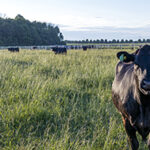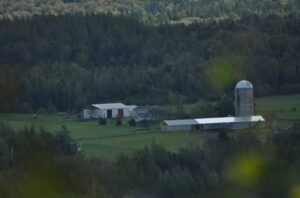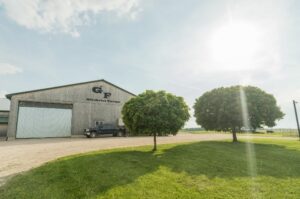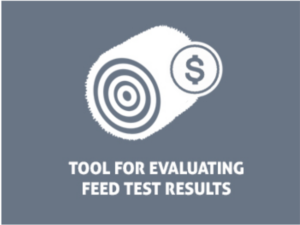Looking to Make the Most of Forage Quality? Consider These Factors
Editor’s note: To support current extension initiatives and provide enhanced resources, the Beef Cattle Research Council has increased collaboration and subsequent delivery of extension content that reflects the production practices and needs of eastern Canadian beef producers. This blog post is the first in an ongoing series of content delivery. Suggestions, ideas, and comments are always welcome.

Thank you to New Brunswick Cattle Producers and Les Producteurs de bovins du Québec for providing access to a French version of this blog post, available here.
Forage quality is an important factor to consider when feeding cattle. While this may seem obvious, maximizing forage quality is sometimes not the focus when management decisions are being made. Yet focusing on quality might enable producers to save costs by getting more out of the forage they have and reducing reliance on expensive concentrates and feed additives.
Forage quality and yield variations in a field depend on a variety of factors including the stage of maturity of the forage, growing conditions, species composition within the field and/or harvest timing decisions. Harvest considerations also include dry down time, or time laying in the windrow, which is impacted by chop length, the use of conditioners and swath width behind the mower. Post harvest management also affects forage quality and is impacted by decisions such as whether to wrap bales in plastic or not and how baled forage is stored. Being aware of these range of factors allows producers to make pre-harvest, harvest, and storage decisions that can optimize forage quality.
To maximize the use of available quality forage, an inventory and quality testing system should be implemented. Notes should be taken on fields which include information such as plant species, maturity at cutting, and age of field. This will allow baled forage to be grouped together based on the same cutting timing (1st, 2nd, 3rd, or 4th cut), forage that was cut and/or baled at a similar time, or that has a similar forage composition.
In addition, feed should be stored to allow access to any group at any time, taking into consideration facilities and limitations. Forage quality testing each feed group provides a better understanding of what quality of feed is on-farm and whether supplies are adequate to meet the herd’s requirements for the year. Early assessment allows time to plan for shortfalls in yield or quality. Testing can begin once stored forage has stabilized, prior to the sale or purchase of forage, or prior to feeding out to animals. Ensure samples are sent to the lab to allow enough time to get results back so that they can inform ration decisions.
Once forage quality test results are received, they can be provided to a nutritionist or producers can use BCRC’s Feed Value Estimator tool to identify how well the tested forage will meet the requirements of different classes of cattle in their herd and their production demands. With this information, producers can better match their forage groups to the production cycle of their animals and more accurately identify the amount of concentrates and feed additives required to meet nutritional needs not fulfilled by forages in the ration.
The following producers have found ways to optimize their feed harvest, inventory, and storage in order to place priority on feed testing and ration development.

Kintail Farms
Brook Village, Nova Scotia
Andrew MacLennan and Krista MacGillivray, of Kintail Farms, run a beef and sheep operation near Brook Village, Nova Scotia. By focusing on their forage quality and feed management, Kintail Farms has grown from four cows and 50-60 ewes a few years ago to currently 25 cows and 200 ewes. Some of the changes implemented include harvesting as close as possible to plant boot stage to target higher quality forage and the creation of an inventory and quality testing system for their feed. A tower silo is used to store the highest quality forage while the remaining forages are turned into baleage, chopped silage, and dry hay.
Wrapped forages are stored to allow for ease of access as well as grouped together based on when they were harvested and their forage composition. These groups are stored separate from one another to ensure that mixing of different groups does not happen and to reduce the risk of confusion when pulling from different feeds when creating rations.
They test all of their forage to determine feed quality and then use this information to build rations for their herd, taking into account the production cycle of the animals. By pulling from their different on-farm produced feed quality groups, they can reduce their reliance on off-farm feed sources and supplements. The forages are supplemented by soybean meal and occasionally whole barley or whole corn depending on needs and market prices, however they’ve been able to reduce the amounts of supplements necessary to meet nutritional demands. The changes to their cutting and forage management system have allowed them to reduce the amount of time it takes for their calves to reach slaughter weight by three to five months for the direct-to-consumer market. This has greatly reduced feed and management costs.

Gilchrist Farms
Lucknow, Ontario
Brad and Kristie Gilchrist of Gilchrist Farms near Lucknow, Ontario, run a cash crop and purebred Angus cow-calf operation as well as a winter bull development centre. Their focus on feed management is highlighted by the many different feed options produced on-farm, which are grown to target specific quality needs and provide a range of options when making rations for their herd. All feed is tested for nutritional quality and each forage is identified, inventoried, and stored separately.
Gilchrist Farms utilizes pasture, haylage, wrapped dry hay, corn silage stored in bunker silos, and other feed ingredients from on-farm and off-farm sources. Some forage fields are managed specifically to target higher protein requirements of their more nutritionally demanding animals, such as the bulls at the development centre, and are cut based on stage of maturity. Other fields are cut to target yield with this feed used for animals with lower nutritional needs. Feed storage is important as well with all feed being either wrapped, placed in bunker silos, or stored inside to maintain quality.
They maintain a close working partnership with their feed sales representative and animal nutritionist. The herd is split into different groups based on production type, with diets created to cater to specific nutritional needs in each phase of production. Rations are modified further based on animal performance and changes in air temperature throughout the year. Their bulls are weighed every twenty-eight days with daily and average gains tracked to ensure animals are meeting targets.
At Gilchrist Farms, on-farm production of feed and intensive management of diets allows them to have greater control of their herd’s diets and allows them to maintain production targets while reducing costs.
This blog post was developed in collaboration and with the expertise of staff at Perennia Food and Agriculture, based in Nova Scotia.
Learn More:
- Stored Forages (BCRC webpage)
- Record Keeping & Benchmarking (BCRC webpage)
- Feed Testing (BCRC calculator)
- REFERENCES:
Ball, D.M., M. Collins, G.D. Lacefield, N.P. Martin, D.A. Mertens, K.E. Olson, D.H. Putnam, D.J. Undersander, and M.W. Wolf. 2001. Understanding Forage Quality. American Farm Bureau Federation Publication 1-01, Park Ridge, IL
Digman, M., D. Undersander, K. Shinners and C. Saxe. 2011. Best Practices to Hasten Field Drying of grasses and alfalfa. University of Wisconsin – Extension, Cooperative Extension Publication A3927, Madison, WI
Click here to subscribe to the BCRC Blog and receive email notifications when new content is posted.
The sharing or reprinting of BCRC Blog articles is welcome and encouraged. Please provide acknowledgement to the Beef Cattle Research Council, list the website address, www.BeefResearch.ca, and let us know you chose to share the article by emailing us at [email protected].
We welcome your questions, comments and suggestions. Contact us directly or generate public discussion by posting your thoughts below.
